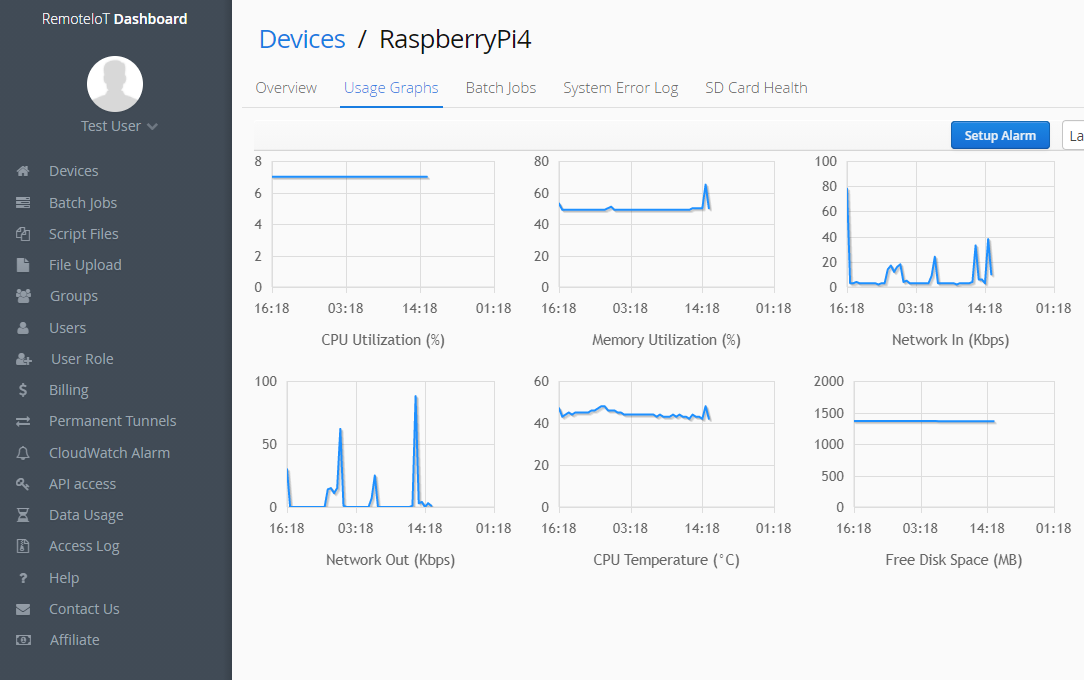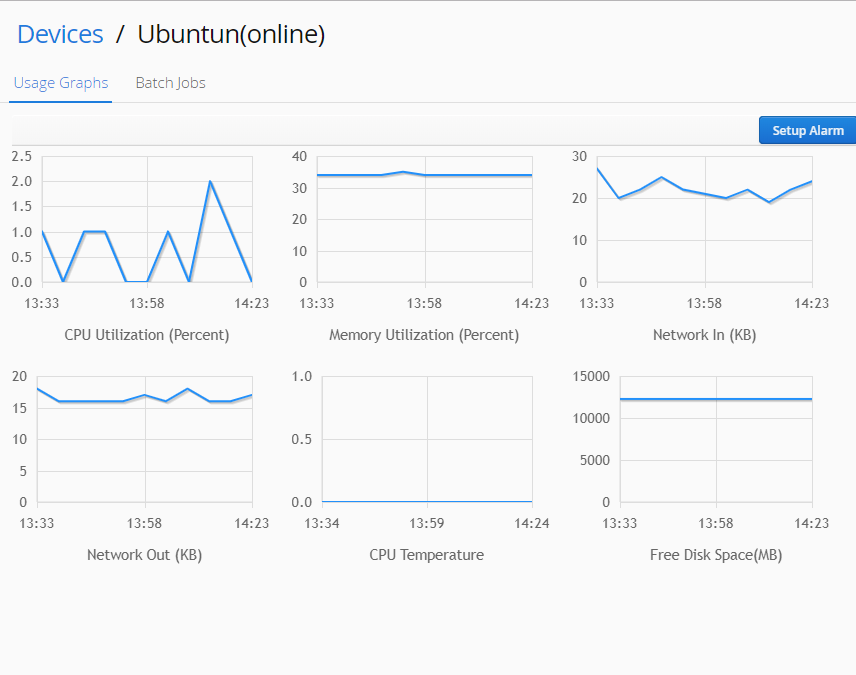
Controlling your Raspberry Pi distantly can be notably handy, nevertheless this likewise entails possible protection difficulties. To alleviate such dangers, executing reliable network shields and learning how Network Address Translation (NAT) acts is key. A firewall acts as a shield between your Pi and the outside world, giving you to handle incoming and outgoing traffic based on preset rules. By customizing your firewall to only authorize trusted connections, you can significantly increase the security of your device.
IP sharing units are another essential element in remote access security. They dispense private IP addresses to devices within your network and present a single public IP address to the outside world. This process helps to cover the internal network structure, making it complicated for attackers to attack individual devices. By taking advantage of both firewalls and NAT routers, you can create a secure and robust remote access solution for your Raspberry Pi.
Utilizing IoT Devices from Anywhere the Firewall
The sector of Internet of Things (IoT) offers incredible opportunities for regulation, but it also generates unique problems. One key difficulty is securely interfacing with these devices from any locations. Traditional firewalls, designed to protect networks from external threats, often curtail access to IoT endpoints, delaying the full potential of connected equipment. To conquer this hurdle, innovative strategies are emerging.
- Cloud-based platforms allow for authorized access to IoT devices, enabling users to oversee them from anywhere with an internet gateway.
- Encrypted Network systems create a protected tunnel between the user's device and the IoT network, safeguarding data during sending.
- Secure Authorization protocols enforce strict access controls, checking the identity of users before granting them access to specific devices.
By embracing these solutions, organizations can capitalize on the full benefits of IoT while ensuring the defense of their valuable data and network.
Filling Gaps: Reaching to Raspberry Pis Behind Network Address Translation (NAT)
Network Address Translation (NAT) can sometimes pose a hurdle when trying to connect your Raspberry Pi from outside your local network. While NAT effectively masks private IP addresses, it can make direct connections complicated. Fortunately, there are several solutions to bridge this gap and enable seamless remote access to your Raspberry Pis.
- One common approach is to utilize a Dynamic DNS service, which provides a static hostname for your Pi that updates automatically even when its IP address changes.
- Another option is to set up port forwarding on your router, allowing specific ports on your Raspberry Pi to be transferred to public IP addresses. This method requires careful configuration and understanding of network protocols.
- For more secure access, consider implementing a VPN (Virtual Private Network). A VPN encrypts your connection and routes it through a private server, masking your real IP address and providing an extra layer of protection.
By exploring these strategies and selecting the most appropriate solution for your needs, you can effectively bridge the gap created by NAT and gain reliable remote access to your Raspberry Pis, unlocking their full potential from anywhere with an internet connection.
Unlocking Remote Control: How to Access IoT Devices Behind Firewalls
Remote access regarding IoT devices commonly be a challenge when dealing with firewalls. These security measures crafted to protect your network can sometimes block your ability to control your automated devices from afar. However, familiarizing yourself with the principles behind firewall operation and implementing precise configurations can grant a secure pathway for remote oversight.
One common approach is to establish port forwarding rules. This necessitates funneling specific IP addresses and ports to your IoT device, effectively making a direct connection. Another method adopts VPNs (Virtual Private Networks). By deploying a secure tunnel between your device and the network where your IoT device resides, you can circumvent firewall restrictions and gain access to your devices remotely. It's important to remember that implementing these solutions calls for a thorough understanding of your network infrastructure and security protocols to protect the integrity and safety of your system.
- Adopt strong passwords for your router and IoT devices.
- Repeatedly update firmware on your router and IoT devices to eliminate security vulnerabilities.
- Disable any unnecessary services or ports on your router.
Managing Firewalls for Remote Raspberry Pi Management
Remotely managing your Raspberry Pi might be a powerful way to exploit its capabilities. However, firewalls are crucial for securing the security of your device. Properly customizing firewall rules provides you to manage incoming and outgoing network traffic, impeding unauthorized communications. Understanding how to operate these settings is important for protecting the integrity of your Raspberry Pi.
- Adopt a firewall software solution designed for Raspberry Pi. Numerous possibilities are available, each with its own set of attributes.
- Set clear rules that specify which ports should be open and which should remain inaccessible.
- Weigh the use of a VPN for an extra layer of safeguarding when linking remotely.
Keep in mind that firewall arrangements ought to be personalized to your specific demands.
Essential Tips for Remotely Managing IoT Devices Through NAT
Effectively controlling your Internet of Things (IoT) devices from a remote location presents unique issues. NAT (Network Address Translation), commonly used in home and small office networks, can complicate this process. This guide will delve into the essential steps to securely access and set up your IoT devices behind a NAT firewall.
- First, establish a secure connection between your remote device and your local network using a reliable VPN protocol like OpenVPN or WireGuard.
- Afterwards, configure port forwarding rules on your router to allow incoming data flows to the specific ports used by your IoT devices. Ensure you only forward traffic to the required ports and use strong passwords for authentication.
- Lastly, consider implementing multi-factor authentication (MFA) for added security when accessing your IoT devices remotely. MFA adds an extra layer of protection by requiring multiple forms of verification, such as a password and a unique code sent to your phone.
By using these best practices, you can safely and securely control your IoT devices from anywhere with an internet connection.
Defending Remote Access to Your Raspberry Pi
Desiring remote control over your Raspberry Pi? A firewall is essential for safely enabling remote access. It acts as a gatekeeper, blocking unauthorized access while allowing accepted requests through. By implementing proper firewall configurations, you can ensure your Pi remains secure even when accessed remotely.
Begin by identifying the services you need to expose externally. VNC are common examples. Configure your firewall to accept inbound sessions on the specific ports used by these services. Remember, a well-configured firewall will only open the necessary doors, limiting potential vulnerabilities.
- Adopt a robust firewall software package designed for Raspberry Pi, such as UFW or iptables.
- Configure strong passwords for your remote access accounts.
- Consistently review and update your firewall rules to address any changes in your setup.
Access Remotely to Raspberry Pis Through Firewalls and NAT Routers
Securing your Raspberry Pi within a network environment often involves traversing firewalls and Network Address Translation (NAT) routers. This can seem daunting in the beginning, but understanding these components is crucial for safely connecting to your device from afar. This guide provides an in-depth walkthrough of common tactics for remote access, empowering you to direct with your Raspberry Pi effectively regardless of its physical location.
We'll delve into the fundamentals of firewalls and NAT, outlining their roles in network security. Then, we'll explore various approaches for establishing secure connections, including SSH tunneling, VPNs, and port forwarding. In addition, we'll provide practical steps and examples to help you implement these techniques on your own setup.
By mastering the art of remote access, you can unlock a world of possibilities for your Raspberry Pi projects, enabling you to monitor performance, repair issues, and even control your devices remotely.
Hardened Remote Access for Your Raspberry Pi
Need remote access to your Raspberry Pi? Follow these procedures to set up secure remote access. First, identify a suitable protocol like SSH or VNC. Next, prepare the necessary software on your Pi. Form a strong password and enable two-factor authentication for added security. Then, channel the required ports on your router to your Pi's IP address. Finally, test your connection from a remote device.
- Utilize firewalls to protect your Raspberry Pi.
- Secure your software up-to-date to patch vulnerabilities.
- Inspect your system logs for suspicious activity.
From Home Network to the World: Remotely Controlling Your Raspberry Pi Across Firewalls
Your small form factor computer can be much more than just a local project. With the right setup, you can control it from anywhere in the world, regardless of firewalls or distance. This opens up a universe of possibilities - managing your home automation, accessing data remotely, or even running cloud-based services directly from your Pi.
While this may seem daunting at first, setting up remote access for your Raspberry Pi is surprisingly straightforward. You'll need to configure your network settings, set up a secure connection, and choose the right tools for controlling your device remotely. Here are some essential tips to get you started:
* First, ensure your home network is configured properly. This includes setting up port forwarding rules to allow access to your Pi from outside your local network.* Next, choose a secure connection protocol like SSH or VPN. These protocols encrypt your communications and protect your data from interference.* Finally, select a remote control tool that suits your needs. Popular options include VNC for graphical access, SSH clients for text-based interaction, and cloud-based platforms for simplified management.
Once you've taken these steps, you can enjoy the freedom of controlling your Raspberry Pi from anywhere with an internet connection. This opens up a world of possibilities for learning, experimenting, and building impressive projects.
Operating IoT Devices Beyond the Local Network: Firewalls and NAT
Extending the reach of Internet of Things (IoT) devices outside of the confines of your local network requires careful consideration of security mechanisms. Firewalls serve as crucial sentries, meticulously scrutinizing incoming and outgoing traffic to block potential threats. Network Address Translation (NAT), on the other hand, allows multiple devices on a private network to share a single public IP address, boosting network efficiency and protecting internal endpoints.
By implementing robust firewall configurations and employing NAT effectively, you can create a secure and optimized environment for your IoT ecosystem to thrive. This combination of tools ensures that your devices can securely collaborate with the wider internet while holding protected from malicious actors.
- Set up comprehensive firewall rules to authorize only trusted traffic.
- Use NAT to obscure internal device addresses.
- Monitor network activity for any suspicious behavior.
